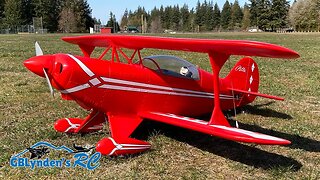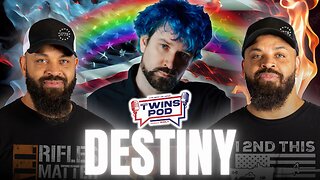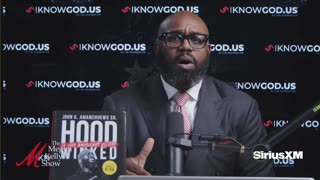Parkzone F4U-1A Corsair Take Offs and Landings on Wet Muddy Grass
This video contains footage using my new Sony HDR CX290 Handycam camcorder of the Parkzone F4U-1A Corsair take-offs and landings on wet muddy grass. I did not expect to be able to do this with this PNP (Plug-N-Play) RC model, but the strong ability to take off on grass, even when wet and muddy will get this plane a lot of time in the air.
The links in this description are affiliate links. They give me a small commission on sales which helps support the channel and keep it independent: https://www.amazon.com/shop/gblyndensrc
This RC Plane Park Flyer is brought to us by RC juggernaut Horizon Hobby. This is also a favorite of many WWII Warbird fans and may be one of the better PZ Parkflyer options they have ever released under their Parkzone brand, though it is debatable if this plane is in fact an upgrade over the previous version for fancy flaps and retracts.
I did a an unboxing, maiden, and review for the F4U-1A Corsair Parkzone, which is the newest Parkzone F4U Corsair and can be seen by clicking on the following link: http://youtu.be/b3H2_GPF0Ek
Takeaway from a day playing in the grassy mud: This is a very nice RC plane in the Parkzone Corsair, but it is not a T-28 Trojan! That means that is handles better on that type of terrain than the Trojan and this plane was flown 100% stock with the exception of flying with a Gforce 2200mAh lipo battery over the Parkzone version.
Remote Control Planes like this are one of the main reasons why I have become so addicted the hobby. The advent of the BNF (Bind and Fly) and PNP (Plug and Play) makes it easy to become addicted to Horizon Hobby brand products such as Parkzone, E-flight, and Blade. I can fly all of their planes and Heli's with my trusty DX6i 6-channel transmitter radio, too.
Here is some history on this plane via Wikipedia:
The performance of the Vought F4U Corsair was impressive. The F4U-1 was considerably faster than the Grumman F6F Hellcat and only 13 mph (21 km/h) slower than the Republic P-47 Thunderbolt;[28][29][30] all three were powered by the R-2800. But while the P-47 achieved its highest speed at 30,020 feet (9,150 m) with the help of an intercooled turbocharger,[31] the F4U-1 reached its maximum speed at 19,900 ft (6,100 m),[32] and used a mechanically supercharged engine.[33]
The U.S. Navy received its first production F4U-1 on 31 July 1942, but getting it into service proved difficult. The framed "birdcage" style canopy provided inadequate visibility for deck taxiing. Even more seriously, the machine had a nasty tendency to "bounce" on touchdown, which could cause it to miss the arresting hook and slam into the crash barrier, or even go out of control. The long "hose nose" visibility problem and the enormous torque of the Double Wasp engine also created operational problems.
Carrier qualification trials on the escort carrier USS Sangamon, on 25 September 1942, caused the U.S. Navy to release the type to the United States Marine Corps.[34] Early Navy pilots spoke disparagingly of the F4U as the "hog", "hosenose" or "bent-wing widow maker".[35] After all, the U.S. Navy still had the Grumman F6F Hellcat, which did not have the performance of the F4U but was a far better deck landing aircraft. The Marines needed a better fighter than the F4F Wildcat. The type was declared "ready for combat" at the end of 1942, though only qualified to operate from land bases until carrier qualification issues were worked out.[36]
The US Navy did not get into combat with the type until September 1943, and the Royal Navy's FAA would qualify the type for carrier operations first. The U.S. Navy finally accepted the F4U for shipboard operations in April 1944, after the longer oleo strut was fitted, which finally eliminated the tendency to bounce.[40]
The first recorded combat engagement was on 14 February 1943, when Corsairs of VMF-124 under Major Gise assisted P-40s and P-38s in escorting a formation of Consolidated B-24 Liberators on a raid against a Japanese aerodrome at Kahili. Japanese fighters contested the raid and the Americans got the worst of it, with four P-38s, two P-40s, two Corsairs and two Liberators lost. No more than four Japanese Zeros were destroyed. A Corsair was responsible for one of the kills, although this was due to a midair collision. The fiasco was referred to as the "Saint Valentine's Day Massacre".[42][43] Although the Corsair's combat debut was not impressive, the Marines quickly learned how to make better use of the aircraft and started demonstrating its superiority over Japanese fighters.
I am also happy to report that I did not crash on my maiden. That is always a nice feeling, especially when it is being used for an unboxing and review video :)
PS: This one is a cool airplane in a line-up of other cool planes like the WWII Warbirds such as the P-40, P-47, F4F, F4U, and P-51 Mustang Parkzone Warbirds. Hopefully they will add in a P-38 or a B-17 in the near future.
-
 6:44
6:44
GBLynden's RC
6 months agoTim's Modded FMS Pitts V2 1400mm RC Biplane
107 -
 58:14
58:14
The Why Files
18 hours agoGöbekli Tepe and the Prophecy of Pillar 43 | Apocalypse and the Vulture Stone
12.2K61 -
 LIVE
LIVE
Twins Pod
3 hours agoTwins Pod - Episode 14 - Destiny: Top Black Conservatives VS Top Blue Haired Liberal!
2,908 watching -
 1:17:49
1:17:49
The Michelle Moore Show
5 hours agoThe Michelle Moore Show Special Presentation: The Earthing Movie (May 24, 2024)
13.3K1 -
 1:57:48
1:57:48
WeAreChange
4 hours agoThe Real TOTALITARIANS Are Being Exposed! W/ DAVE SMITH
33.5K67 -
 1:02:10
1:02:10
shaneyyricch
3 hours agoTrump Bronx Rally Recap - F YouTube Lets Rumble
8.49K1 -
 51:18
51:18
Ben Shapiro
5 hours agoEp. 1972 - Joe Biden Doesn’t Give A S*** About You
49.4K96 -
 2:58:32
2:58:32
The Charlie Kirk Show
6 hours agoBronx Rally Aftermath + 12 Seats in Texas + AMA | Henry, Wax | LIVE 5.24.24
85.4K70 -
 1:58:49
1:58:49
Russell Brand
9 hours agoTell The Truth on Vaccines and THIS Will Happen
142K161 -
 1:39:27
1:39:27
Megyn Kelly
23 hours agoCharlamagne tha God on Why He Won't Endorse Biden, and John Amanchukwu on the Truth About America
52.8K101